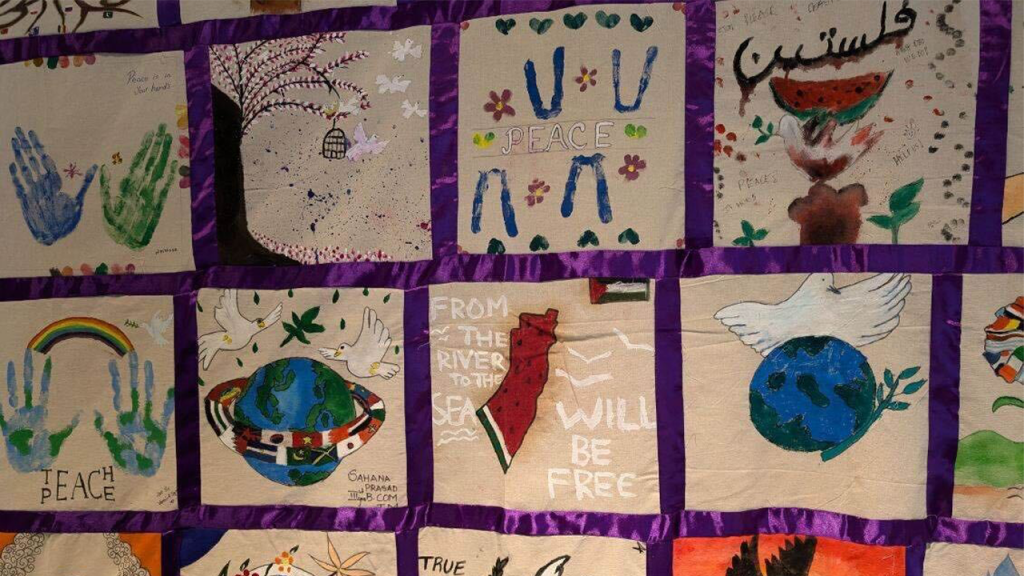At the United Nations New York City headquarters, a Global Peace Flag exhibit has caused controversy among Israelis due to a map that many see as an explicit call to wipe Israel off the map. The map shows Israel resembling a watermelon, with the Palestinian flag in the top right corner and the phrase “From the River to the Sea” on the left side and “Will be Free” on the right. This phrase has been interpreted by Israelis as a call for genocide, while supporters of Palestinians argue that it represents the struggle against the State of Israel. The phrase has gained popularity following Hamas’ attack on Israel in 2023, which left many dead and hostages still in captivity in Gaza.
Israelis have criticized the exhibit as promoting the destruction of the Jewish people and the State of Israel. Israeli representatives at the UN have demanded the removal of the exhibit, calling it disgraceful and shameful. They argue that the exhibit ignores the plight of Israeli hostages and promotes hate against Israel. The UN has responded by stating that the exhibit was organized by a fashion designer who asked for messages of peace on fabric from people around the world. They have covered the panels with controversial messages, including “From the River to the Sea,” multiple times due to unauthorized interference.
The contentious nature of the exhibit has reignited tensions between Israelis and Palestinians, with each side interpreting the phrases on the map differently. Israelis see it as a call for genocide, while Palestinians view it as a representation of their struggle for liberation. The ongoing conflict between Israel and groups like Hamas and Hezbollah has only exacerbated the situation, with violence and casualties continuing to rise. The exhibit serves as a visual representation of the deep-rooted issues that persist in the region, further highlighting the need for peaceful dialogue and resolution.
The presence of the exhibit at the UN has raised questions about the organization’s role in promoting peace and resolving conflicts in the Middle East. Critics argue that the exhibit’s content is one-sided and fails to address the complexity of the situation. Israeli representatives have called for the removal of the exhibit, citing concerns about the promotion of hate and violence against Israel. The UN’s response to the situation has been met with skepticism, as repeated interference with the exhibit has raised security concerns and questions about accountability.
The controversy surrounding the Global Peace Flag exhibit underscores the deep divide between Israelis and Palestinians, as well as the challenges of finding a peaceful resolution to the conflict. The exhibit has sparked debates about the role of the UN in addressing conflicts and promoting peace worldwide. The differing interpretations of the phrases on the map highlight the complexity of the situation in the region and the ongoing struggle for peace and stability. Efforts to address the controversy and address the concerns of both Israelis and Palestinians will be crucial in moving towards a more peaceful and just resolution to the conflict.


